In breast discharge, mammogram unremarkable but ductography definitive
A 54-year-old patient presented for evaluation of spontaneous left breast discharge. The patient is status post-right mastectomy with TRAM reconstruction in 1999. The patient states she has noted left breast discharge for quite some time.
Clinical History
A 54-year-old patient presented for evaluation of spontaneous left breast discharge. The patient is status post-right mastectomy with TRAM reconstruction in 1999. The patient states she has noted left breast discharge for quite some time.
Findings
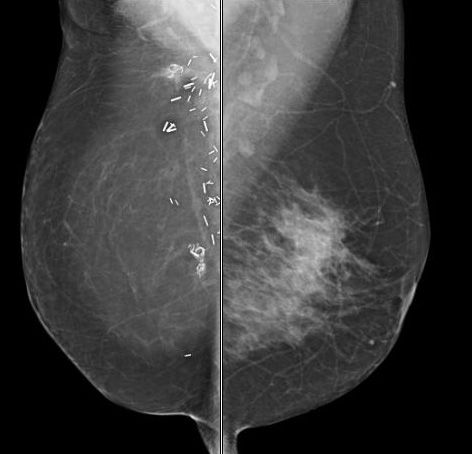
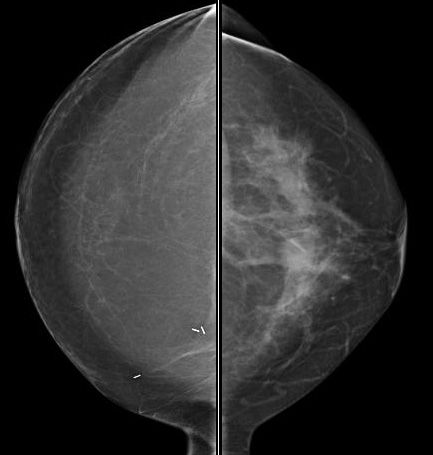
Mammography reveals postsurgical changes from TRAM reconstruction in the right breast. The left breast reveals no abnormality (Figures 1A and 1B).
Upon examination, discharge was expressed from two ducts in the left breast. In the central portion of the left nipple, a brownish discharge at 12 o’clock was present and, in addition, a clear discharge in the left 6 o’clock portion of the nipple. Slides were obtained and sent for pathology.
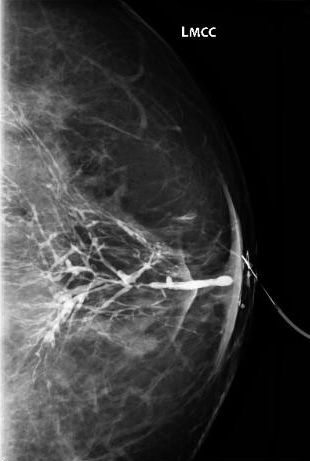
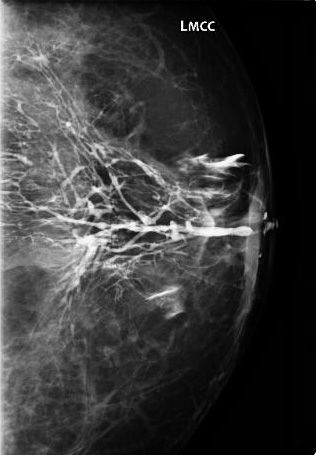
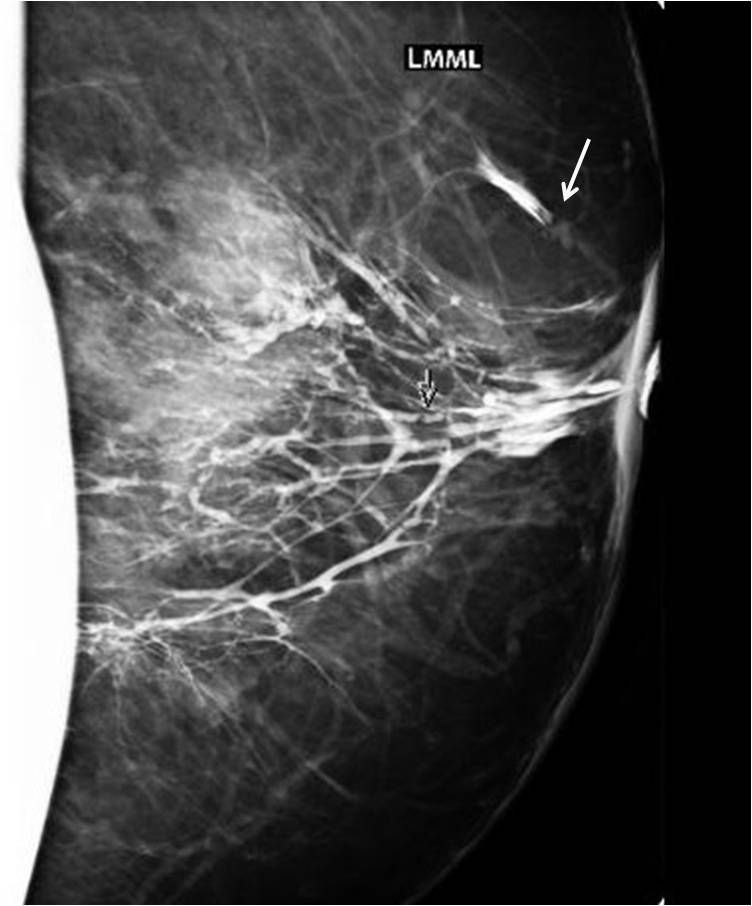
A left ductogram was performed; the left breast duct in the 12 o’clock area of the nipple was cannulated centrally and the duct opacified with contrast (Figure 2A and 2B). This revealed multiple areas of intraluminal masses throughout the ductal system (Figure 2C).
Breast MRI for extent of disease revealed extensive diffuse enhancement involving the entire breast (Figure 3). This enhancement extends from the nipple to the chest wall.
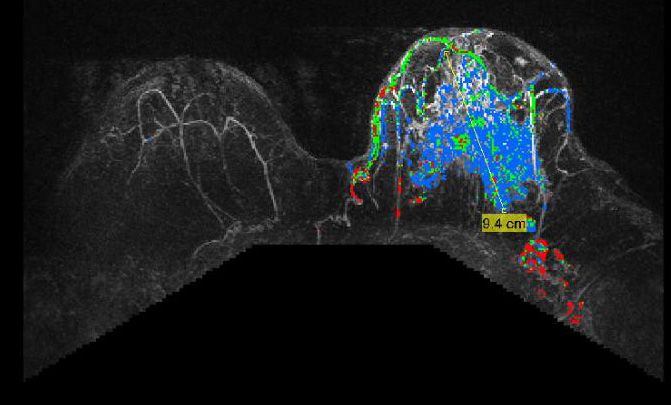
Diagnosis
Pathology of the left nipple discharge revealed atypical ductal epithelium. Stereotactic core biopsy of the ductographic abnormalities was also performed. Pathology revealed ductal carcinoma in situ, nuclear grade 3.
Discussion
This case demonstrates the importance of a complete work-up when a patient presents with discharge, including mammography and ductography. In this case, the mammogram was unremarkable; the ductogram revealed multiple intraluminal masses, which upon biopsy proved to be carcinoma. Dr. Destounis is managing partner and a radiologist at Elizabeth Wende Breast Care in Rochester, NY.
How to Successfully Launch a CCTA Program at Your Hospital or Practice
June 11th 2025Emphasizing increasing recognition of the capability of coronary computed tomography angiography (CCTA) for the evaluation of acute and stable chest pain, this author defuses common misperceptions and reviews key considerations for implementation of a CCTA program.
New PSMA PET Prep Product Now Available in the U.S.
June 11th 2025Offering an extended shelf life, the FDA-approved Gozellix, a preparation kit for gallium-68 (68Ga) gozetotide injection, is indicated for use in PSMA PET imaging of prostate cancer patients with suspected recurrence or metastasis.